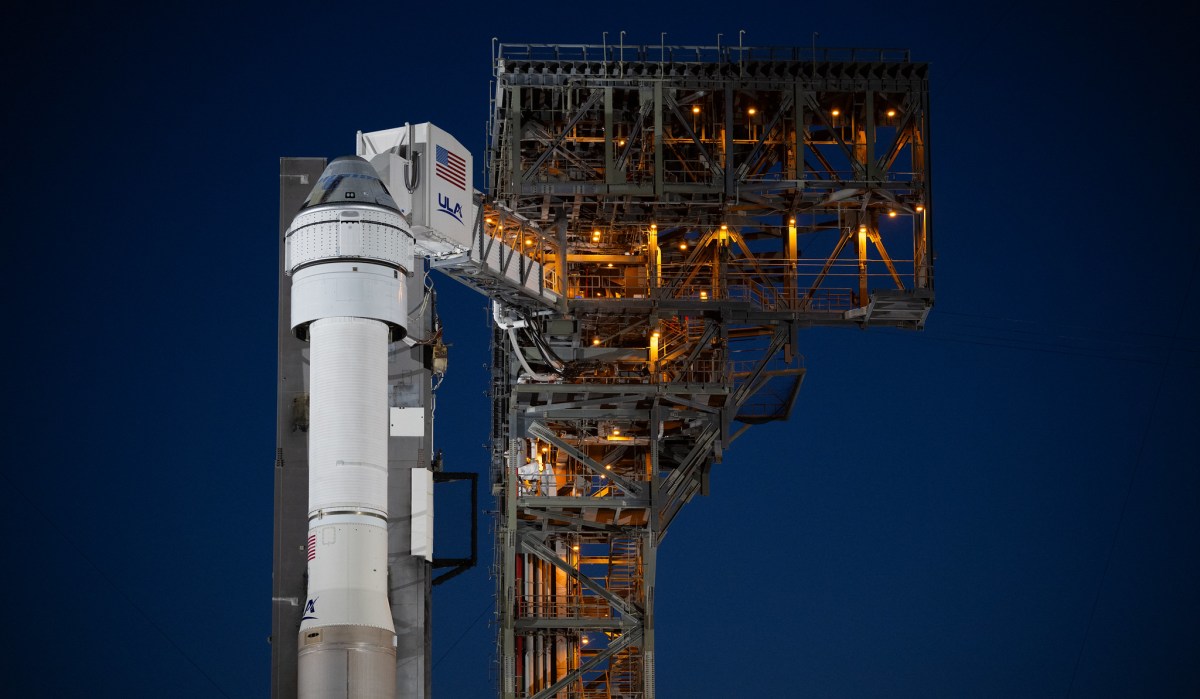KENNEDY SPACE CENTER, Fla. — Even a successful crewed test flight of Boeing’s CST-100 Starliner vehicle could create a temporary hiccup in plans to exchange seats between commercial crew vehicles and Soyuz spacecraft going to the International Space Station.
At a May 3 briefing here, NASA and Boeing officials said they had completed a launch readiness review for Starliner’s Crew Flight Test (CFT) mission, scheduled to launch no earlier than 10:34 p.m. Eastern May 6 on a United Launch Alliance Atlas 5. Officials said they were working no issues with the spacecraft, and forecasts called for a 95% chance of acceptable launch weather.
The CFT mission is intended to be the final test flight for Starliner before NASA certifies it for use on crew rotation missions to the ISS. NASA astronauts Butch Wilmore and Suni Williams will put the spacecraft through its paces on the mission, slated to last a little more than a week.
“It’s exciting to bring in Starliner and the ULA Atlas 5,” Steve Stich, NASA commercial crew program manager, said at the briefing. “We’ve been striving for commercial crew to have two independent space transportation systems. That’s been our goal from commercial crew’s inception and we’re very close to reaching that goal.”
A successful CFT mission would allow NASA to certify the vehicle in time for an early 2025 launch of the first operational Starliner mission, designated Starliner-1. NASA has already announced three of the crew members for that flight: NASA astronauts Scott Tingle and Mike Fincke and Canadian Space Agency astronaut Joshua Kutryk.
The fourth person to fly on that mission has not yet been assigned. “The final crew assignment for Starliner-1 will be announced following review and approval by the agency and its international partners,” NASA said in November when it announced the addition of Kutryk to the crew.
Since the Crew-5 mission in the fall of 2022, one seat on commercial crew missions has been assigned to a Russian cosmonaut, part of a seat barter agreement finalized in July 2022 between NASA and Roscosmos. In exchange, a NASA astronaut gets a seat on Soyuz flights to the station, an approach NASA calls “integrated crews” that ensures there will be at least one American and one Russian on the ISS should either Soyuz or commercial crew vehicles suffer problems that ground them.
At the May 3 briefing, though, NASA officials said it was unlikely that a Russian cosmonaut would be assigned to Starliner-1. “We expect, on the Roscosmos side, they’re more likely to want to see a long-duration flight also, so we think they’ll want to start to fly with us on Starliner-2,” said Dana Weigel, NASA ISS program manager.
That would appear to disrupt the ongoing series of seat exchanges between NASA and Roscosmos. “We’re still working through that with our Roscosmos counterparts. It’s our desire to continue to do integrated crew,” she said, adding that NASA and Roscosmos don’t have an agreement yet in place for exchanging crews in the timeframe that will include Starliner-1.
Any lapse in integrated crews, she added, would be temporary. “The expectation is, even if we can’t make that swap work, we’ll go back to the integrated crew and swapping for all of the rest of the flights.”
Once Starliner is certified, NASA plans to alternate between that vehicle and Crew Dragon for ISS crew rotation missions. Boeing is under contract for six operational missions, which under that alternating flight approach would run through 2030, the scheduled retirement of the station.
